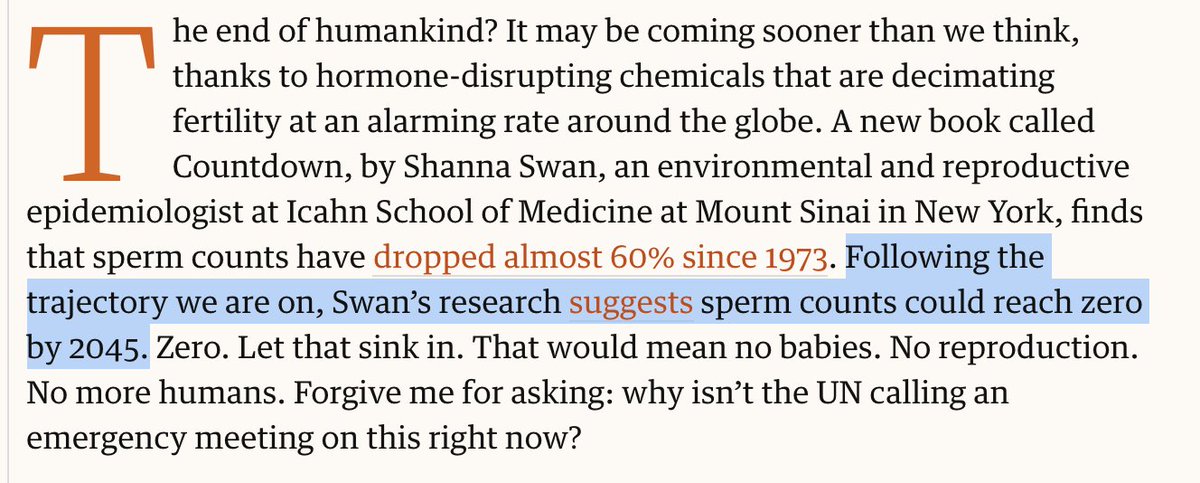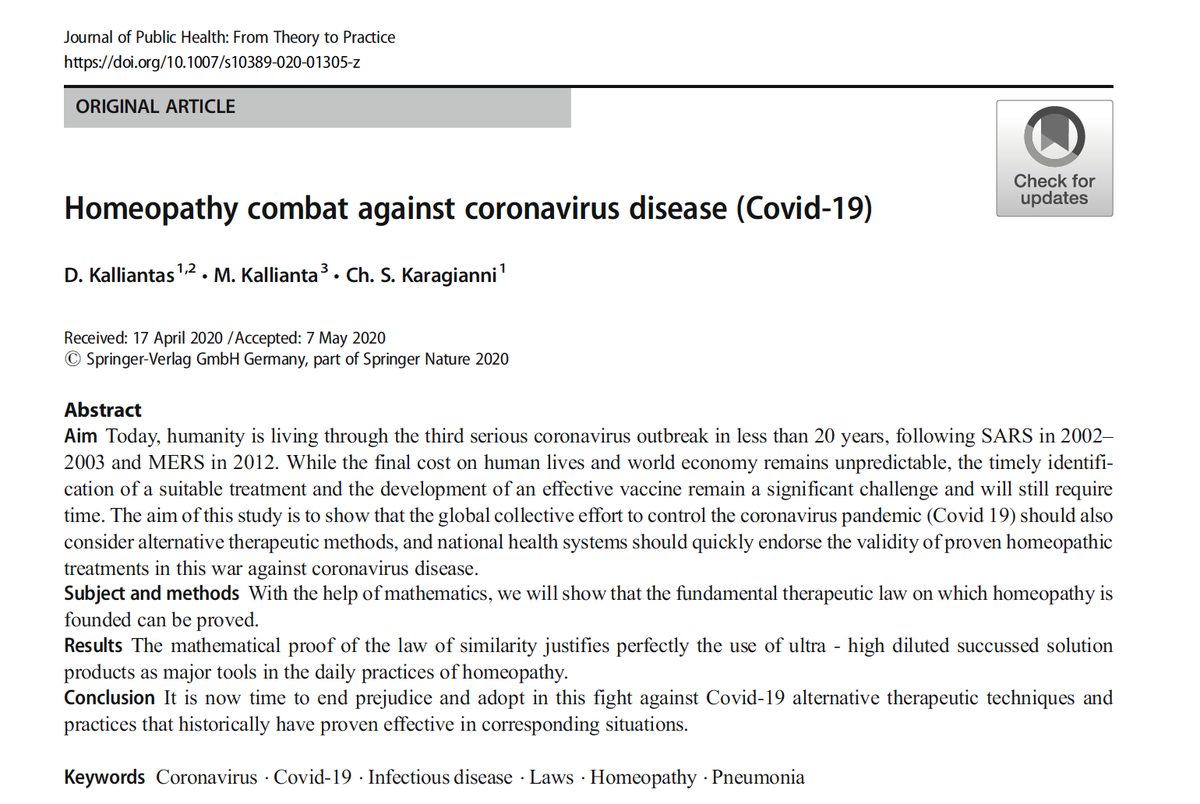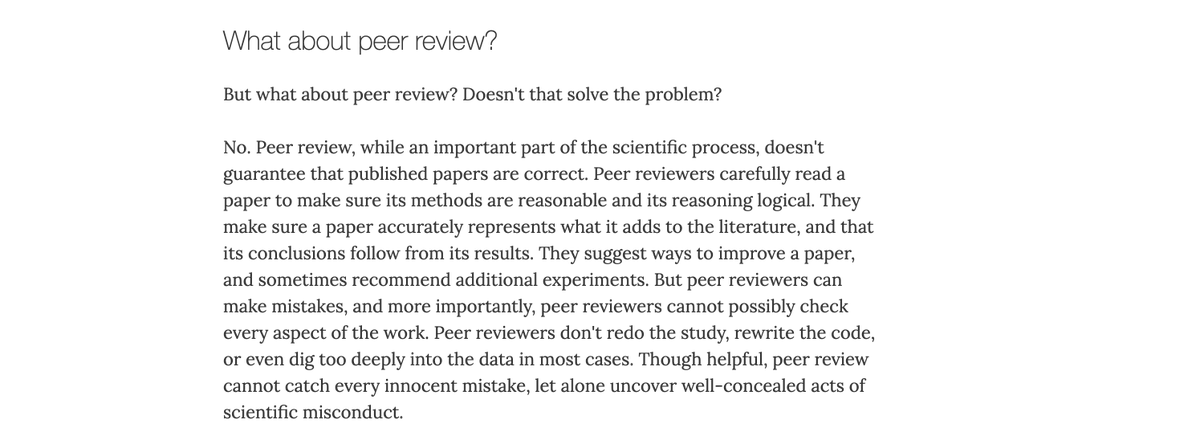
Nobel Laureate Michael Levitt is worried about declining sperm counts, but he says he hasn't done any reading yet.
Should he panic? Let's dig a little deeper.
Should he panic? Let's dig a little deeper.
https://twitter.com/MLevitt_NP2013/status/1372571271117029385
In our class, one of the fundamental rules for spotting bullshit is this:
"If something seems too good or too bad to be true, it probably is."
Zero sperm counts in 2045 sounds pretty bad.
When you see something like that, it's time to dig deeper and track back to the source.
"If something seems too good or too bad to be true, it probably is."
Zero sperm counts in 2045 sounds pretty bad.
When you see something like that, it's time to dig deeper and track back to the source.
The source cited for this spermatazoic doomsday is another Guardian article.
theguardian.com/us-news/2021/f…
That article in turn punts to an article in Axios.
theguardian.com/us-news/2021/f…
That article in turn punts to an article in Axios.

The Axios piece quotes the author of a new book on—you guessed it, declining sperm counts—thusly.
axios.com/falling-sperm-…
axios.com/falling-sperm-…

"Which is always risky"
To say the least.
Now I don't have a copy of the book. But I can backtrack a little bit. The second Guardian story also links to a large meta-analysis that the author published in 2017.
academic.oup.com/humupd/article…
To say the least.
Now I don't have a copy of the book. But I can backtrack a little bit. The second Guardian story also links to a large meta-analysis that the author published in 2017.
academic.oup.com/humupd/article…
At this point my ability to reconstruct the 2045 date gets a bit shaky. We have these two figures, which even extrapolating linearly aren't going to get you to zero this century. 

Ah, but this looks promising.
Here's the "meta-regression model for mean sperm concentration by fertility and geographic groups, adjusted for potential confounders."
Here's the "meta-regression model for mean sperm concentration by fertility and geographic groups, adjusted for potential confounders."

Now we just have to extend the axes a little bit, extend the trend line....and BINGO!
We hit Sperm Zero in 2045.
We hit Sperm Zero in 2045.

When you see something like this, it's worth asking yourself: what's going to happen 2046?
So....we found something that seemed to bad to be true, traced it back to the source, and indeed, it's far too bad to be true—or at least to be backed by any credible evidence whatsoever.
We've got a linear regression line from some sort of meta-analysis, extrapolated out as far again as the underlying data are drawn from.
No underlying mechanistic model.
And a ridiculous conclusion of negative sperm in 2046.
No underlying mechanistic model.
And a ridiculous conclusion of negative sperm in 2046.
Which would be a heartbreaker, because we'd never survive as a species long enough to run negative 100m dash times.
callingbullshit.org/case_studies/c…
callingbullshit.org/case_studies/c…

So I think you can rest easy for the time being, @MLevitt_NP2013, and fear not any conspiracy to sap and impurify all of our precious bodily fluids.
• • •
Missing some Tweet in this thread? You can try to
force a refresh













